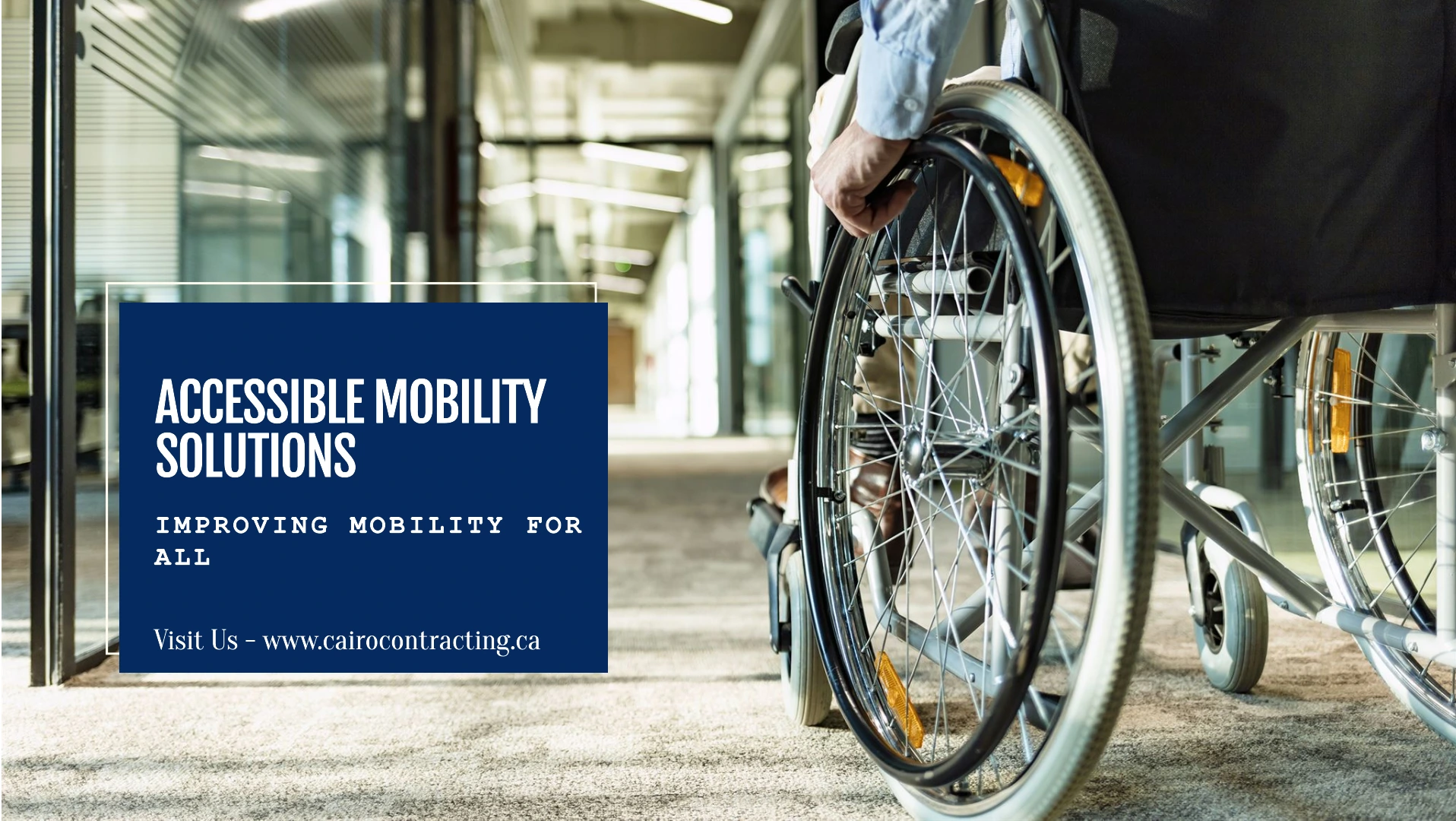When considering accessibility solutions for mobility, there are several key factors to ensure that environments, products, or services are truly accessible to individuals with mobility challenges. These factors include:

1. Type of Mobility Impairment
- Understanding the specific needs based on whether someone uses a wheelchair, walker, cane, or experiences difficulty walking or standing. Solutions might vary depending on the nature of the disability (e.g., temporary vs. permanent, visible vs. invisible).
2. Physical Environment
- Ramp Access: Ensure ramps are the correct incline and have proper support. For example, ADA-compliant ramps typically have a 1:12 ratio (rise to run).
- Doorways and Hallways: Doors should be wide enough for wheelchair access (typically 32 inches or more). Hallways should also be wide enough to accommodate mobility devices.
- Elevators and Lifts: They should be easy to access, with clear signage, appropriate button placement, and sufficient space for mobility devices.
- Flooring: Non-slip, smooth flooring is crucial to avoid trip hazards. Mats or carpets should be securely fixed to avoid slipping or dragging.
3. Transportation Solutions
- Public Transit Accessibility: Buses, trains, and subways should be accessible, with low floors, ramps, or lifts, and enough space to accommodate mobility devices.
- Paratransit Services: Accessible van services or ride-sharing solutions designed for people with mobility impairments.
- Parking: Accessible parking spaces should be located near entrances and be wide enough for easy transfer from vehicle to mobility device.
4. Assistive Technologies
- Wheelchairs & Scooters: Ensure that users have access to mobility devices suited to their needs, whether manual or electric, with sufficient customization.
- Smartphone Apps: Apps that help locate accessible routes, restrooms, or transport options, and provide real-time updates on accessibility.
- Voice-Controlled Devices: Technologies that allow individuals to control their environment, like lighting, heating, or even elevators, through voice commands.
5. Public and Private Facilities
- Accessible Restrooms: Public restrooms should have wider doors, grab bars, lower sinks, and higher toilets to accommodate those with mobility aids.
- Seating in Public Areas: Provide seating with armrests for easier sitting and standing, as well as designated spaces for wheelchair users.
- Signage: Clear, large, and easily readable signs to help individuals navigate spaces, with universally recognizable symbols for accessibility.
6. Safety and Emergency Services
- Emergency Exits: Ensure emergency exits are accessible and free of obstacles. Evacuation procedures should consider individuals with mobility issues, providing them with assistance.
- Alert Systems: Visual and auditory alerts should be available for individuals with mobility and sensory impairments in case of emergencies.
- Safe Routes: Clearly designated and unobstructed pathways for individuals with mobility devices.
7. Cost and Affordability
- Affordable Options: Accessible products and services should be priced fairly to ensure that they are not a financial burden on individuals who need them.
- Insurance Coverage: Insurance policies should cover mobility aids, therapies, and assistive devices to improve accessibility for users.
8. Universal Design Principles
- Inclusive Design: Solutions should be built with accessibility in mind for everyone, not just people with disabilities. Universal design focuses on creating environments and products that everyone can use without modification.
- Customization and Flexibility: Provide options for users to personalize solutions according to their specific needs, whether that means adjusting the height of a desk, the width of a doorway, or the type of support they need.
9. Community and Social Support
- Awareness and Education: Educating the public and businesses about accessibility issues and the importance of inclusivity can foster more inclusive attitudes and designs.
- Peer Support: Engaging people with mobility challenges in the design and implementation process can help create solutions that are truly beneficial.
10. Legal and Regulatory Compliance
- Ensure solutions adhere to local and international accessibility standards and regulations (e.g., Americans with Disabilities Act, European Accessibility Act).
By addressing these factors, we at Cairo Contracting work dedicatedly to create more accessible and equitable environments that allow individuals with mobility challenges to fully participate in daily life.